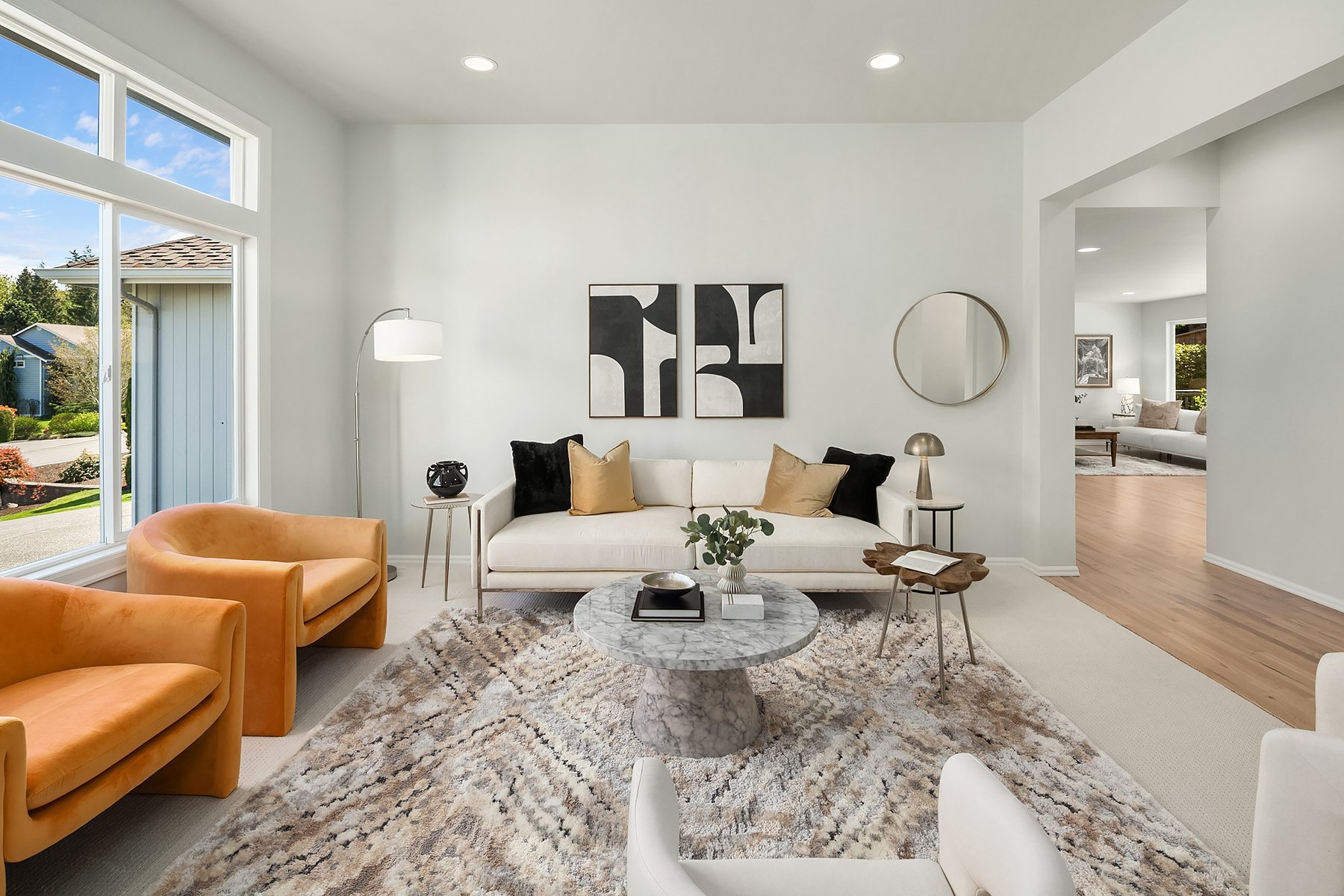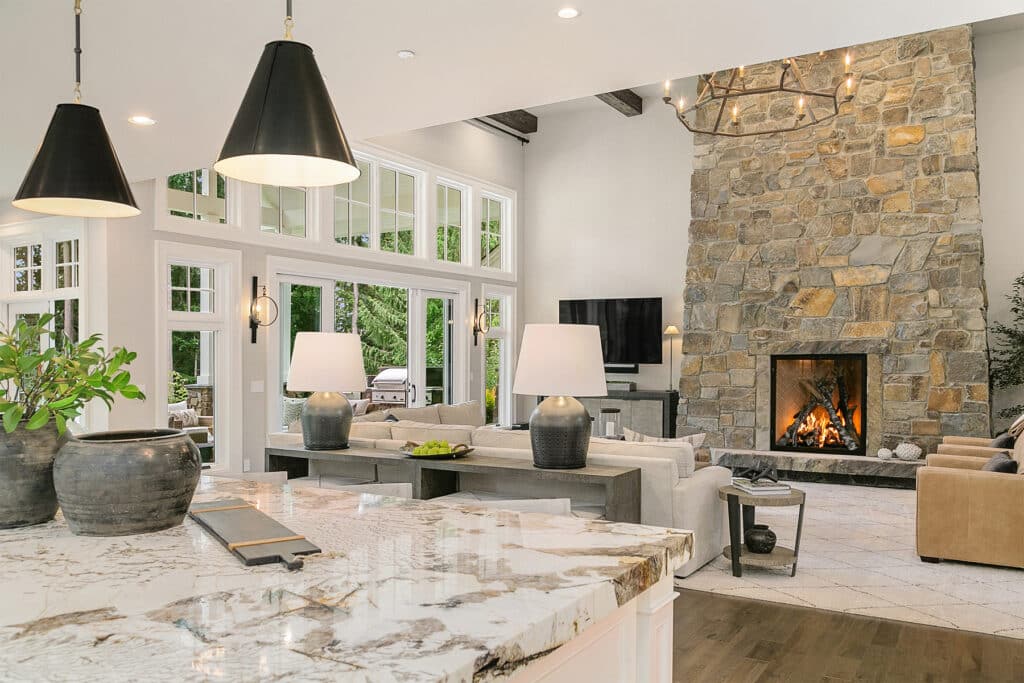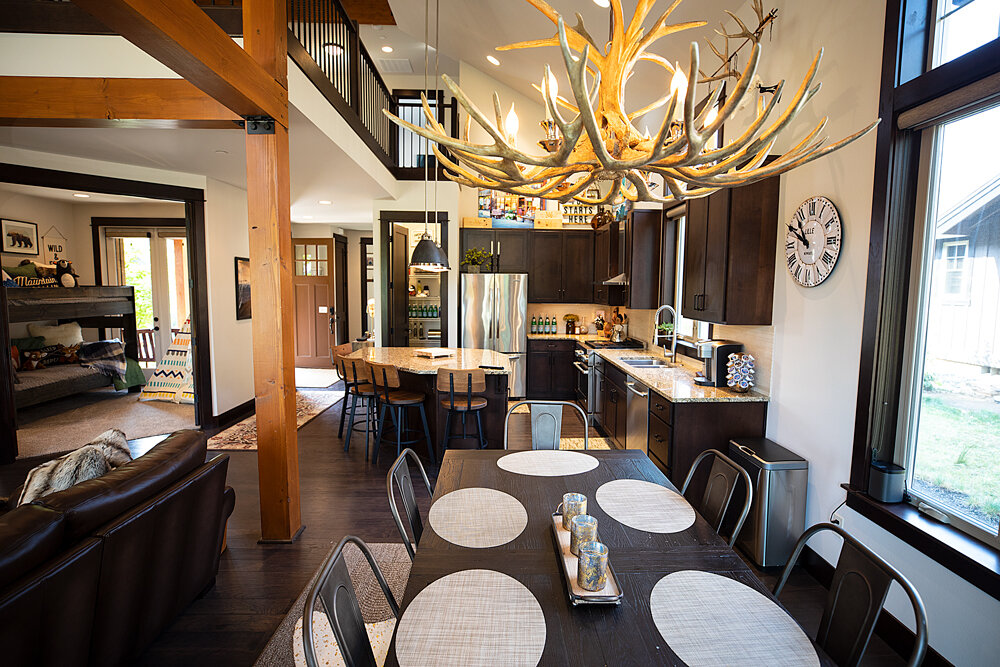
Staging
Are you thinking about selling your house?
Wondering how to get the most out of your investment?
It’s time to consider the power of staging. But first, let’s cover the basics.

Understanding the Concept of Staging
Staging is an essential aspect of selling a home. It is the process of preparing a property for sale by making it look its best. Staging involves arranging furniture, artwork, and accessories to showcase the home’s strengths and minimize any weaknesses. The goal is to create a space that potential buyers can see themselves living in. It also helps with marketing the home via photos and video. Great media content in vital in this visually dominated space.

What is Home Staging?
Home staging is a strategic marketing tool that involves presenting your home in the best possible light to potential buyers. The process can range from minor repairs and decluttering to a full-scale redesign. The idea is to create a neutral, welcoming environment that potential buyers can easily visualize themselves living in.
Home staging can also involve making small upgrades to the property, such as replacing outdated fixtures or adding a fresh coat of paint. These minor changes can have a significant impact on the overall appearance of the home and can make it more appealing to potential buyers.

The Goals of Staging a House
The primary goals of staging a house are to attract more potential buyers, increase the perceived value of the home, reduce the time the home is on the market, and ensure a better online presence.
- Attracting more potential buyers: By staging your home, you can make it more appealing to a wider range of potential buyers. A well-staged home can help buyers imagine themselves living in the space and can create an emotional connection that can lead to a sale.
- Increasing the perceived value of your home: A well-staged home can create the perception of a higher value, which can lead to a higher sale price. By highlighting the home’s best features, you can make it more attractive to potential buyers and increase its perceived value.
- Reducing the time your home is on the market: Staging your home can help it sell faster. By creating a space that is welcoming and appealing to potential buyers, you can generate more interest in the property and reduce the amount of time it spends on the market.
- Ensuring a better online presence: In today’s digital age, most buyers start their search for a home online. By staging your home, you can ensure that it looks its best in online photos and virtual tours. This can help generate more interest in the property and lead to more in-person showings.
Overall, staging is an essential part of the home-selling process. By investing in staging, you can increase your chances of selling your home quickly and for a higher price.
The Benefits of Staging a House for Sale
When it comes to selling your home, it’s important to make it look its best. One way to do this is through staging. Staging involves arranging furniture and decor in a way that showcases your home’s best features and creates an inviting atmosphere.
Now that you know what staging is and why it’s important, let’s take a closer look at the benefits:
Attracting More Potential Buyers
The more people who view your home, the higher the chances of it selling. Staging can help create a more inviting space, which can potentially attract more buyers to your property. By highlighting your home’s best features and creating a warm and welcoming atmosphere, you can turn a “meh” property into a showstopper!
For example, if your home has a beautiful fireplace, staging can draw attention to it by placing a cozy armchair nearby and adding some decorative accents like a vase of flowers or a stack of books.
Increasing the Perceived Value
Staging can also increase the perceived value of your home. By highlighting all the key features, potential buyers will be able to see all the amazing opportunities for themselves. This can create more interest and even lead to multiple offers!
For instance, if your home has a spacious backyard, staging it with outdoor furniture and a BBQ can help potential buyers envision themselves hosting summer barbecues and enjoying the outdoor space.
Faster Sale Time
When your house looks its best, it’s more likely to sell quickly. Staged homes often sell faster than non-staged ones, which means less time on the market and a quicker return on your investment.
By creating a space that feels move-in ready, potential buyers can envision themselves living in the home and may be more likely to make an offer. This can help speed up the selling process and save you time and money in the long run.
Better Online Presence
Let’s face it; most buyers start their search online. By having high-quality photos of your staged home, you’ll be able to attract more people to your listing and generate more interest. Remember, first impressions count!
By staging your home, you can create a visually appealing space that looks great in photos and catches the eye of potential buyers. This can help your listing stand out and generate more interest, leading to a faster sale.
In conclusion, staging your home can have a range of benefits when it comes to selling. By creating an inviting space that highlights your home’s best features, you can attract more potential buyers, increase the perceived value, sell faster, and generate more interest online. So if you’re looking to sell your home, consider staging it to help it look its best!
The Costs and Efforts Involved in Staging
While staging has many benefits, it’s essential to consider the costs and efforts involved.
Hiring a Professional Stager
If time is of the essence or you’re not sure where to start, consider hiring a professional stager. They’ll be able to assess your property’s strengths and weaknesses, and create a customized plan to showcase it in the best light possible. Keep in mind that this will come at an additional cost.
Hiring the Right Stager
The most critical part of this formula is finding a competent stagers. As home prices and sales have risen, a greater demand for real estate stagers has emerged. There are excellent stagers and there are some who are only adequate. The best stagers will be up-to-date on design trends and will have easy access to the newest looks. Keep in mind that consumers are well-informed about current styles thanks to the prevalence of trend-focused media (reality home and remodeling shows, Instagram, Pinterest, etc.).
DIY Staging Options
If you’re looking to save some cash and you have an eye for design, DIY staging may be the way to go. This can involve everything from basic cleaning and decluttering to painting and purchasing a couple of items to spruce up a space. There are plenty of online resources to help you if you choose this path. In most cases when you do a DIY, less stuff is the key component.
Time and Effort Required
Remember, staging a home can take time. You’ll need to be prepared to put in the effort if you decide to go down this route. This could mean anything from rearranging furniture and decor to making minor repairs. The more work you put in, the more likely you are to get a return on your investment.
Staging Techniques and Tips
Now that we’ve covered the basics let’s take a closer look at some staging techniques and tips.
Staging a home is an important step in the selling process. It can make the difference between a quick sale and a home that sits on the market for months. By following some simple staging techniques and tips, you can create a space that is welcoming and attractive to potential buyers.
Decluttering and Depersonalizing
When it comes to staging, less is often more. Your goal is to create a neutral space that anyone could imagine themselves living in. This starts with decluttering and depersonalizing your home. Consider packing away any personal items and removing anything unnecessary.
Decluttering doesn’t mean getting rid of everything. It means removing excess items that may distract buyers from seeing the potential of the space. This could include things like excess furniture, knick-knacks, and personal photos. By removing these items, you’ll create a more open and inviting space that buyers can envision themselves living in.
Maximizing Space and Functionality
Another important aspect of staging is maximizing space and functionality. Make sure each room has a clear purpose and remove anything that doesn’t serve that purpose. Rearrange furniture if necessary to create an open and welcoming space.
When it comes to furniture, less is often more. Too much furniture can make a space feel cramped and small. Consider removing any unnecessary pieces and arranging the remaining furniture in a way that creates an open and inviting space.
It’s also important to make sure that each room has a clear purpose. If you’re using a spare bedroom as a storage space, consider clearing it out and setting up a guest room or home office instead. By creating a clear purpose for each room, you’ll help buyers see the potential of the space.
Enhancing Curb Appeal
Don’t forget about the outside of your home! The first thing buyers will see is the exterior, so it’s essential to make a good impression. This could involve anything from landscaping to painting the front door. Make sure your home has excellent curb appeal to entice potential buyers into viewing.
Simple landscaping changes can make a big difference in the overall appearance of your home. Consider planting some flowers or adding some potted plants to the front porch. You could also consider repainting the front door or adding a new mailbox to create a welcoming entrance.
Highlighting Key Features
Finally, make sure to highlight your home’s key features. This could be anything from a gorgeous fireplace to a stunning view. By drawing attention to these details, you’ll be able to showcase your property’s unique selling points.
If you have a fireplace, make sure it’s clean and well-maintained. Consider adding some decorative elements like candles or a vase of flowers to draw attention to the feature. If you have a stunning view, make sure the curtains or blinds are open to showcase it.
By following these staging techniques and tips, you’ll be able to create a space that is welcoming and attractive to potential buyers. Remember, the goal is to create a neutral space that allows buyers to envision themselves living in the home. With a little effort, you can create a space that sells!
Real-Life Examples and Success Stories
If you’re not sure whether staging is worth the investment, here are some real-life examples and success stories to consider.
Case Studies of Staged Homes
According to a study conducted by the National Association of Realtors, 77% of buyers’ agents said that staging made it easier for potential buyers to visualize the home as their own. One agent even reported that a staged home sold for $50,000 over the asking price!
Another case study involved a home that had been on the market for over a year with no offers. The owner decided to invest in staging, and within a month, the home received multiple offers and sold for $20,000 above the asking price.
Staging has also been proven to be effective in selling homes that are outdated or in need of repairs. One homeowner had a home that was in need of a lot of work, but after staging, the home sold for $30,000 more than the asking price.
Testimonials from Homeowners and Realtors
Many homeowners and Realtors swear by the power of staging. One homeowner said, “We had our house on the market for months with no interest. After staging it, we had multiple offers within a week!” Another Realtor stated, “Every single house I’ve staged has sold faster and for more money than the non-staged homes in the same area.”
Another homeowner shared their experience with staging, stating, “I was hesitant to invest in staging, but I’m so glad I did. The home looked so much better and it sold within a month, which was a huge relief for me.”
Realtors have also reported that staging can help attract more potential buyers to a home. One Realtor said, “When we stage a home, we see a significant increase in the number of showings and interest from potential buyers. It really does make a difference.”
Staging has also been proven to be effective in selling homes that have been on the market for a long time. One Realtor had a home that had been on the market for over a year with no offers. After staging, the home received multiple offers and sold within a month.
Weighing the Pros and Cons of Staging
When it comes to selling your home, there are many factors to consider. One of the most debated topics is whether or not to stage your home. Staging involves setting up your home with furniture and decor to make it more appealing to potential buyers. While there are many benefits to staging, there are also some drawbacks to consider.
The Pros of Staging
Staging your home can have many benefits. First and foremost, it can help your home stand out in a crowded market. By creating a visually appealing space, you can attract more potential buyers and generate more interest in your property.
Staging can also help buyers visualize themselves living in the space. By setting up furniture and decor in a way that highlights the best features of your home, you can help buyers see the potential of the space.
Another benefit of staging is that it can help you sell your home more quickly. In a competitive market, a staged home can generate more interest and lead to faster sales.
The Cons of Staging
While there are many benefits to staging, there are also some drawbacks to consider. One of the biggest drawbacks is the cost. Staging can be expensive, especially if you hire a professional stager. However, it’s important to keep in mind that the cost of staging can often be recouped through a higher sale price.
Another potential drawback of staging is that it can be time-consuming. Setting up furniture and decor takes time, and you may need to make some changes to your home to make it more appealing to buyers.
When Staging is Worth the Investment
If you’re looking to sell your home quickly and for as much money as possible, staging is likely worth the investment. It can help create a lasting impression and generate more overall interest, leading to faster sales and higher offers.
Additionally, if your home has unique features or is in a higher price range, staging can help showcase these features and make your home more attractive to potential buyers.
When Staging May Not Be Necessary
If you’re working on a tight budget or are short on time, staging may not be necessary. However, keep in mind that the benefits of staging often outweigh the costs. If you’re unsure whether staging is right for you, consider speaking with a real estate agent or professional stager to get their opinion.
In conclusion, staging can be a valuable tool when it comes to selling your home. While there are some drawbacks to consider, the benefits often outweigh the costs. If you’re looking to sell your home quickly and for as much money as possible, staging may be worth the investment.
Conclusion: Does Staging Really Help Sell a House?
The short answer is yes! Staging helps create a neutral, inviting space that potential buyers can easily visualize themselves living in. It can also increase the perceived value of your home, reduce the time on the market, and attract more potential buyers.
If you’re thinking about selling your home, consider staging as your secret weapon. Whether you hire a professional or DIY, staging can help make your property stand out and sell faster than you ever thought possible. Good luck!


